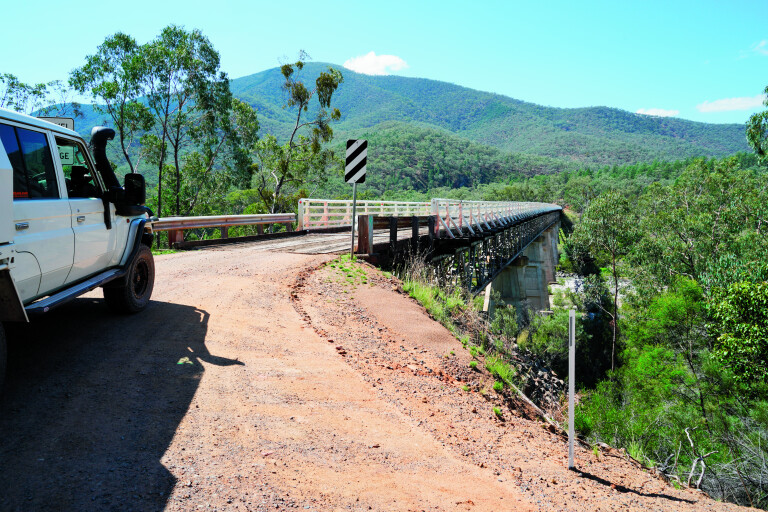
The track was carpeted with twigs, branches and leaves from the surrounding forest, but it was otherwise smooth and easy going for most of the way, testimony to the low use of the track. We were searching for remnants of the Victoria Star Mine but little did we know we had driven past the major site hidden as it is, amongst the verdancy of Far East Gippsland.
Our trip had started a few days previously when we left the mountain township of Omeo and headed east looking for less frequented spots to enjoy in the Victorian High Country. Our first night had been spent camped at a remote, little-used campsite on the edge of Limestone Creek, north of the Limestone Creek-Black Mountain road that cuts through this section of High Country, west of the mighty Snowy River. Our camp beside the mountain stream was everything you look for in a bush camp: a shady glade amongst trees that weren’t so tall to be a danger, a small creek with mountain-fresh and clean water flowing past, green grass beneath our feet, and an abundance of firewood within 100 metres. Pure heaven with nobody within cooee, while dingos called during the night and the snort of a wild stallion guarding its mares woke us in the morning.
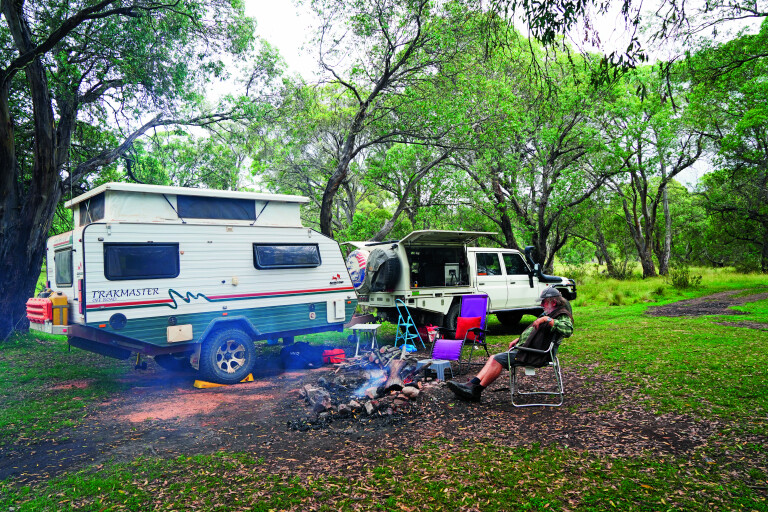
We had settled in for a few days but rain that first night continued into the morning and sent us scurrying out of this mountain fastness, the steep tracks becoming decidedly slippery after rain and no place for a four-wheel drive with a camper on the back, even one as capable as my 79 Cruiser.
For the next few nights we settled in and enjoyed the serenity of one of my favourite camps in this part of the High Country: Native Dog Flat. While it’s close to the main dirt road and easily accessible, it’s rarely crowded and for the first few days we enjoyed the spot all to ourselves and a group of wild horses that came in every day to graze on the surrounding grassy plain.
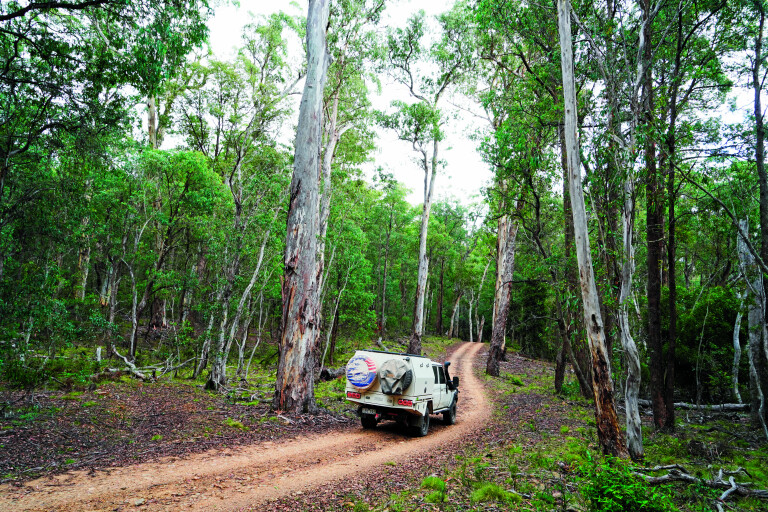
With the weekend, a couple of locals from Orbost came along, so looking for even quieter abodes we pushed east and crossed the mighty Snowy River at McKillops Bridge. The road has improved since the first time I drove it 40-odd years ago, but it’s still a long, tight descent where there are few places to pull aside and let an oncoming vehicle pass. It’s not recommended if you are towing, but we took the chance and were lucky enough to only meet one vehicle and he had seen us coming down and parked up to let us sneak by.
After a brief stop at the info shelter on the eastern approach to the bridge, we cruised on, stopping for the evening at the historic Ambyne (sometimes, Amboyne) Suspension Bridge. The old bridge crosses the Deddick River and was designed to handle vehicles weighing up to three tonnes and was in use from 1935 to 1970. It’s only one of two still standing and is classified by the National Trust and has undergone some renovation. It’s worth a stop to check it out and, while the camping area is small, it’s okay for a night camp.
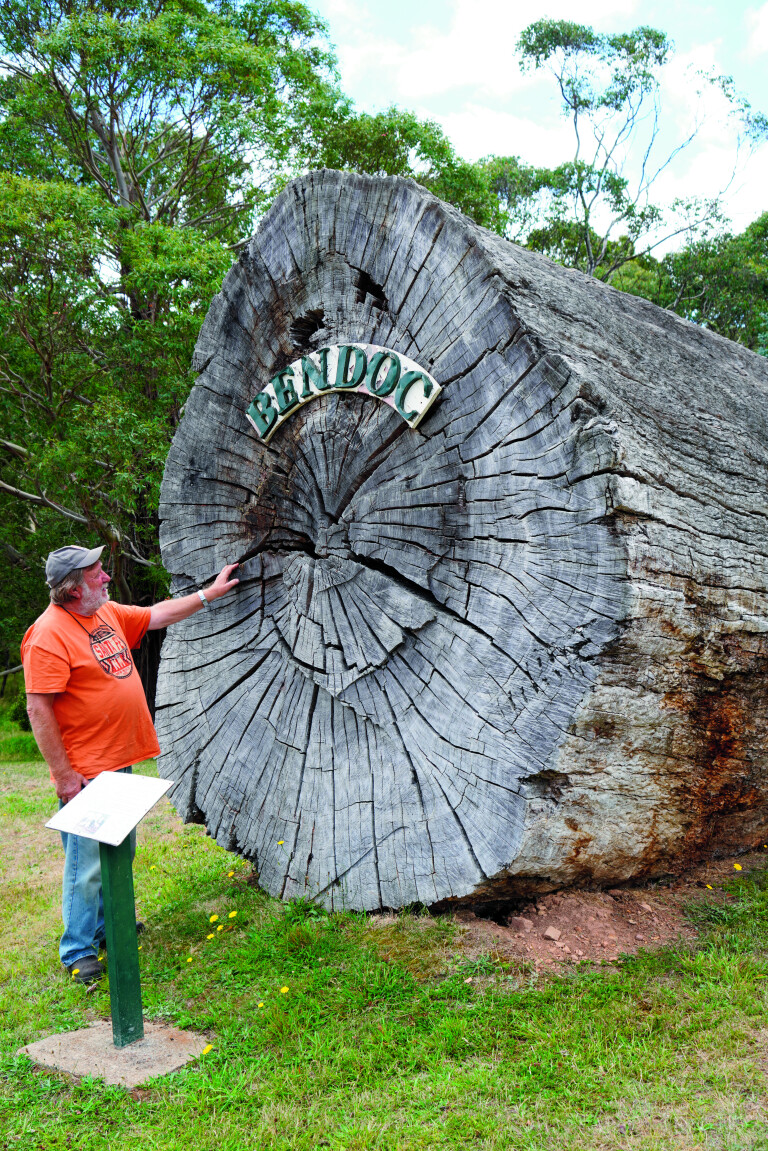
BEN'S DOCK
We wound our way towards Bendoc, close to the NSW border in East Gippsland. Once an important gold-mining town, today Bendoc is pretty quiet with just a pub and not even a general store or fuel outlet to serve any visitors or passing traffic.
Local legend reckons the town’s name dates back to the 1840s when cattle from Ben Boyd’s runs, which then stretched from Eden to the Monaro, wandered south into Gippsland. Arriving at ‘Wagra’, the original name for the town and an Aboriginal word for ‘black-eyed crow’, there was a portion of clear country and Ben’s cattle congregated there. It was here that Ben and his men would dock the tails of the cattle, and so the area became known as ‘Ben’s Dock’, later to be shortened to ‘Bendoc’. However, there are other stories too.
Today, if it wasn’t for the government departments of Parks Victoria and the DPI, along with the SES and their relatively new buildings, you’d be flat out finding any life in the town. On the outskirts are a couple of logging contractors who employ most of the people in the region, but it was the old gold-mining stories of the region that had attracted our attention.
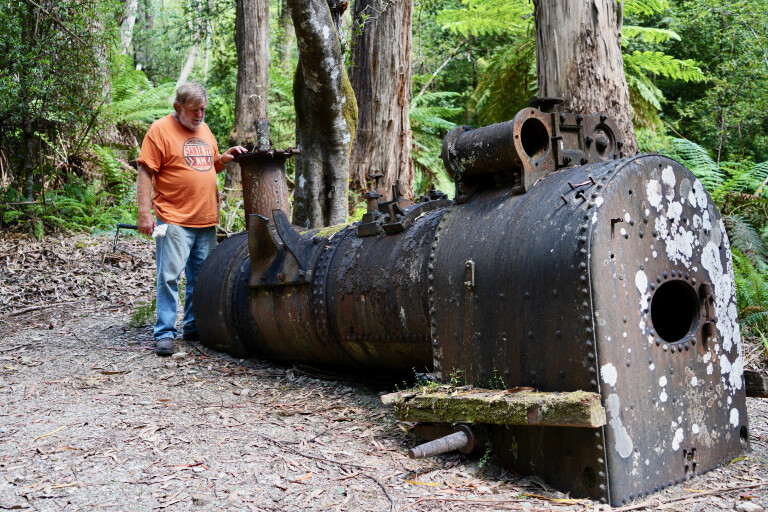
Alluvial gold was first discovered in the Bendoc River in 1855 and, while this didn’t last too long, the rich deposit of what was to become the Morning Star mine was found a couple of years later. Other deposits were soon discovered and over the next 20 years many prospectors, including a number of Chinese, were sluicing for gold in Back Creek, and in the Bendoc, Queensborough and Delegate Rivers, while hard-rock miners were digging shafts as deep as 200 metres at such mines as the Conical Star, Homeward Bound, United Welcome Stranger, Sunbeam, Wagra and Snow Storm, amongst others.
In 1889, rich reefs were discovered at what became Clarkeville, and from 1910 until the end of WWI the Victoria Mine, south of Bendoc, was taken up and worked successfully, as was the neighbouring Welcoming Stranger. Prospectors were again active in East Gippsland during the 1930s and the depression, with a hydraulic sluicing works established at Back Creek, which operated until the 1950s.
While timber harvesting was very much a part of the gold-mining process in the early days of settlement, it wasn’t until after WWII that the forests in the region were subjected to commercial logging, which continues to this day.
In 1988, the Errinundra National Park of nearly 40,000ha was established and covers an area of rich verdant forest, including the largest preserved cool temperate rainforest in Victoria. In amongst this verdancy are some of the biggest trees still standing in Victoria, with many listed by the National Trust as outstanding trees such as giant shining gums of over 60 metres in height and more than 200 years old, with mountain grey gums and messmate of similar size and vintage.
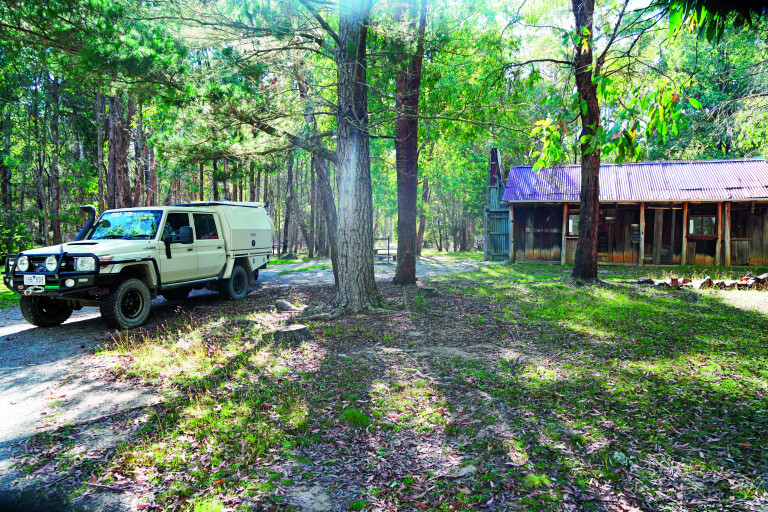
WILSON'S HUT
We had heard of a bush hut in the region that offered pretty good camping, so we wandered south along forest roads to Wilsons Hut, which sits in a small grassy clearing dotted with some ancient pine trees and surrounded by native forest. The hut was built, by all accounts, around 1916 and is a rare surviving example of a slab hut erected entirely of timber and bark. It’s in remarkably good condition with a couple of rooms, a little-used fireplace and a water tank outside full of water, with a stack of firewood conveniently located close to but not beside the hut.
In the surrounding cleared area a couple of established fireplaces show hardly any ash, while the nearby tables are the only other facility you’ll find here. We settled in for a few nights, which kind of extended a Victorian COVID lockdown came into effect.
Still, we had plenty of time to explore the surrounding forests and the remnants of the nearby Victoria Star Mine, mentioned at the start of this yarn, which reportedly still had the remains of its mullock heap, some mine workings and machinery foundations – the remains of a battery and a portable steam engine. The Victoria Star was reputedly the highest yielding mine in East Gippsland and was originally worked in 1869 to a depth of more than 90 metres, producing some 5337oz of gold, today worth more than 12 million Aussie dollars.
Backtracking along our little-used track, we first found the mullock heap and then some scattered old pieces of mining equipment before stumbling on the old boiler and stamper right beside the main dirt road.

Later, we ambled farther afield, driving through areas of pristine forest dominated by tall majestic trees to the Jungle King Mine, which is an example of a mining shaft dug vertically into solid rock and quartz. Nearby at the end of a short walking track are the remains of the Aspen battery, the most obvious equipment being an old boiler, while anything else is hidden in the dense scrub that surrounds it.
At other times, we drove through forest just starting to recover from the devastating fires that wreaked East Gippsland at the end of 2019 and the beginning of 2020 when more than 1.3 million hectares of wild, rugged forested country was burnt. It’ll be a long time before the forest in those places will be back to anywhere near its previous glory, but, be assured, the process is beginning and new life is sprouting, with colourful mountain daisies often in profusion alongside the tracks and roads.
Another relic of the gold-mining days is the Delegate Diversion Tunnel, which was cut through solid rock to divert the river so the resultant river bed, then cut off from the flow of the stream, could be worked for gold. How much gold was won by this tough endeavour, or even who dug the tunnel, is shrouded in mystery and the veil of time. While some say it was Chinese workers who dug the tunnel, others say it was a solitary gold prospector using hand tools and dynamite who constructed the water-filled passage. Whoever it was went to a lot of trouble, the results of which can still be seen today.

It was on yet another excursion to visit another old mining area at Golden Gully we came a bit unstuck. Wandering along a little-used track, which was absolutely covered in small branches and other debris from the surrounding forest and overhanging trees, we were continually stopping and dragging sticks and branches out from underneath the Cruiser. Then, somehow, one got stuck in an engine pulley which shredded the serpentine belt, which quickly had the battery light on and the temp gauge climbing. Needless to say, we got out of there (a long story) and had the belt replaced (we now carry a spare) before we returned to our camp at Wilsons Hut.
The pub in Bendoc was finally allowed to open and we sat with the locals enjoying a beer at the end of another day of exploring and wandering, vowing that we’d be coming back to this little-explored and visited area of Victoria. You should check it out!
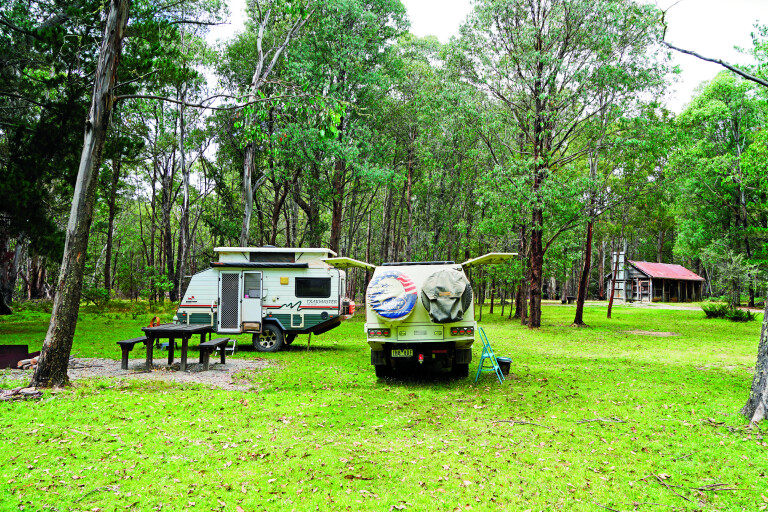
TOP FIVE PLACES TO VISIT

1. The wild horses of Native Dog Flat

2. Delegate Diversion Tunnel

3. The impressive Snowy River

4. The giant trees of the Errinundra NP

5. Camping at Wilsons Hut

COMMENTS